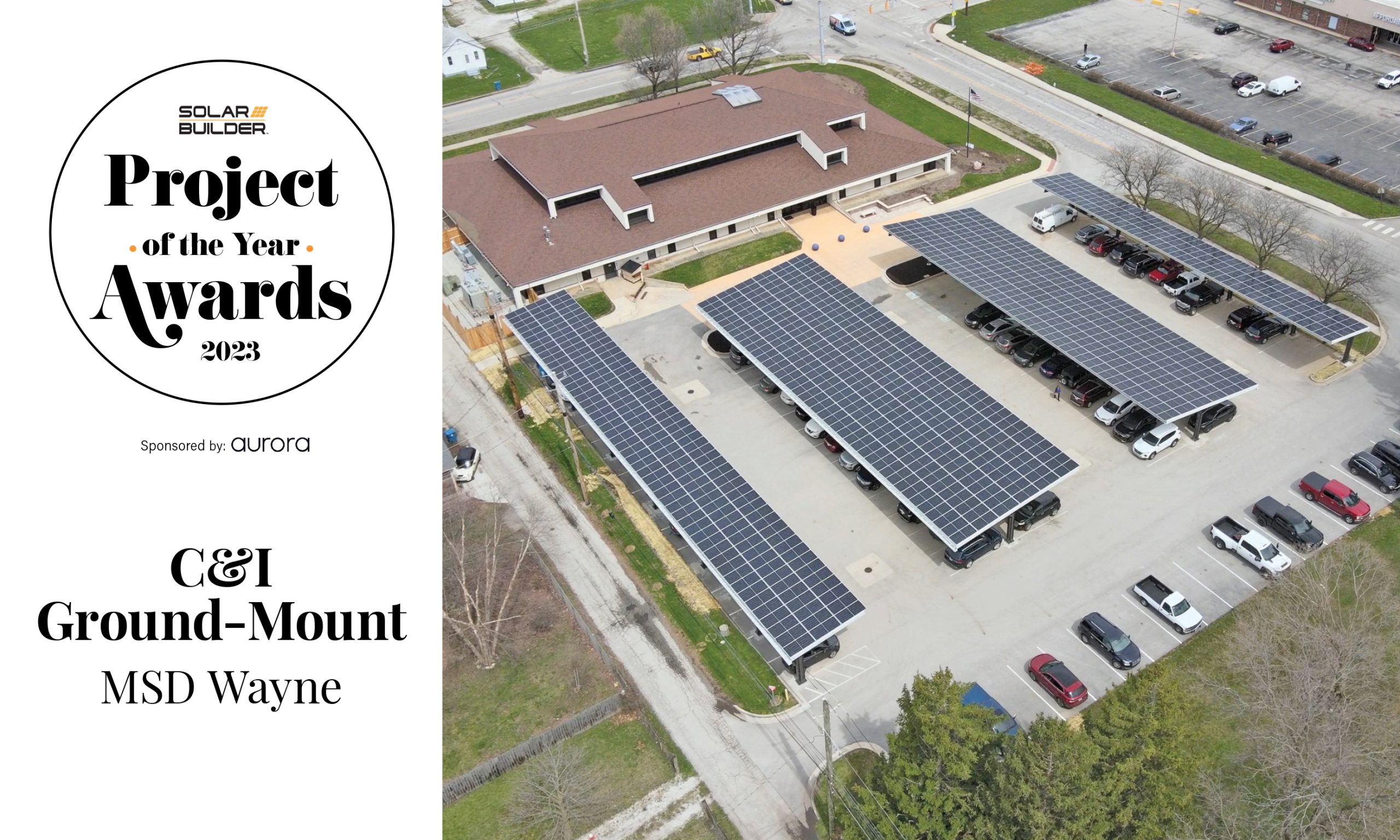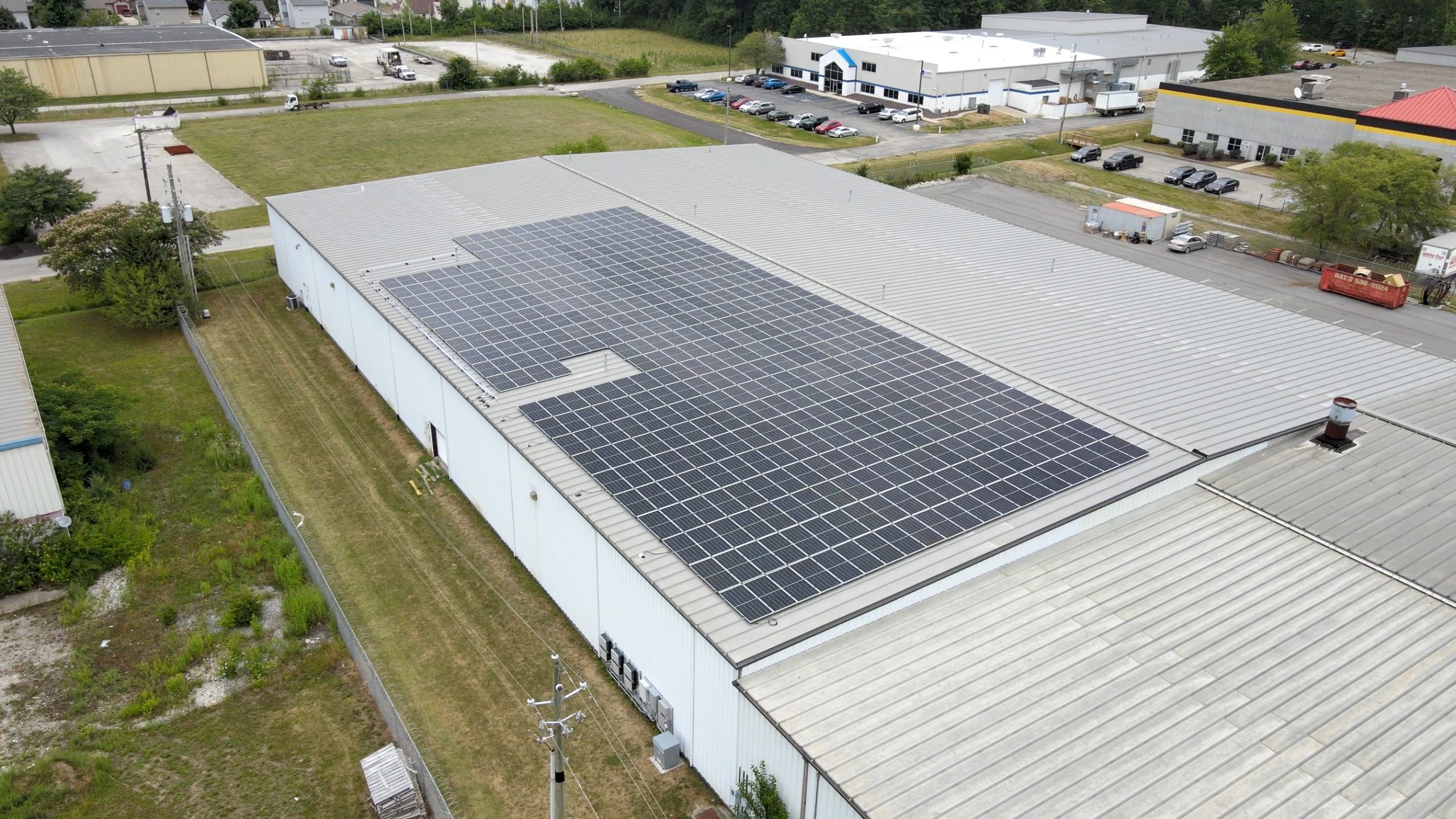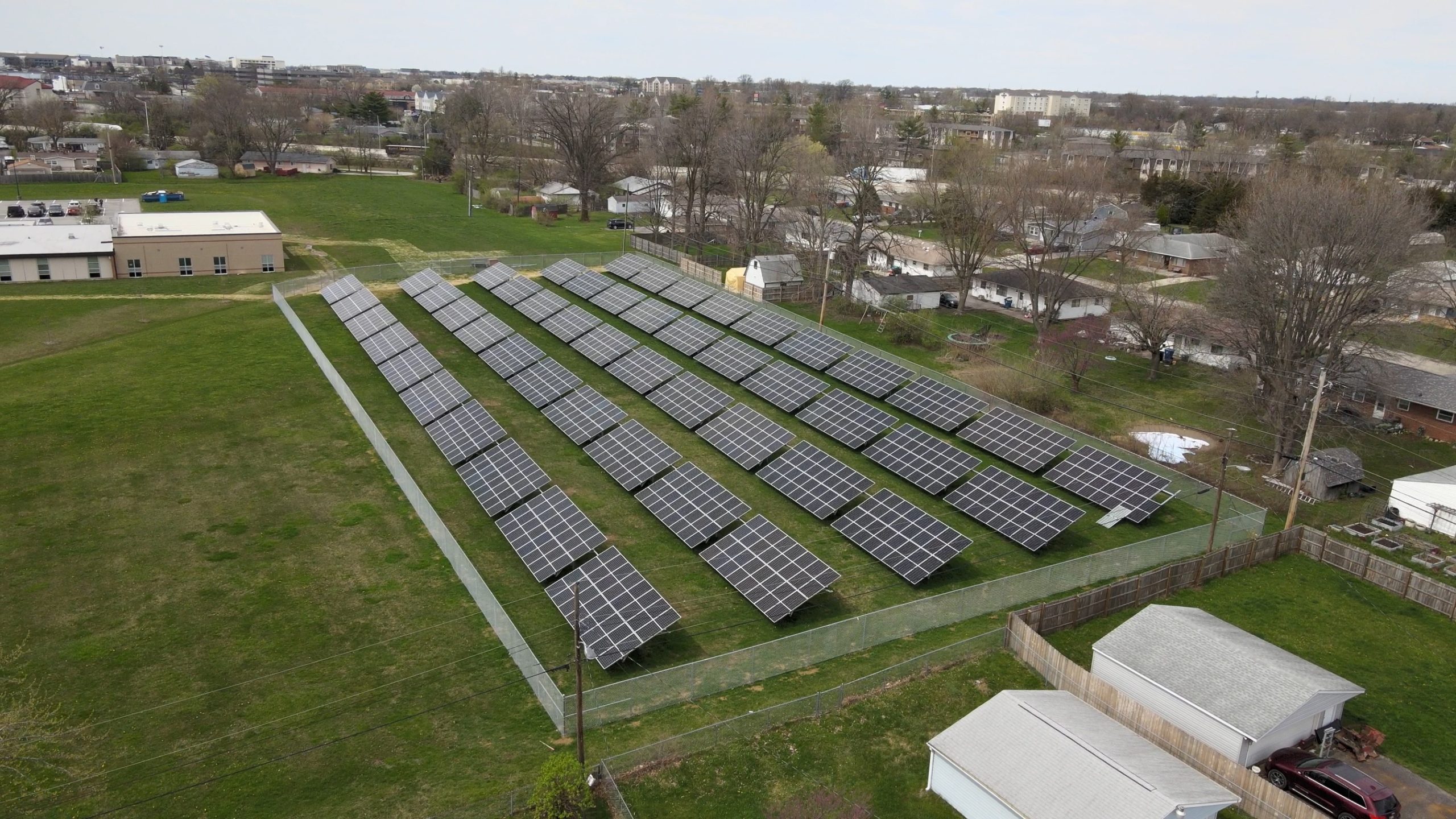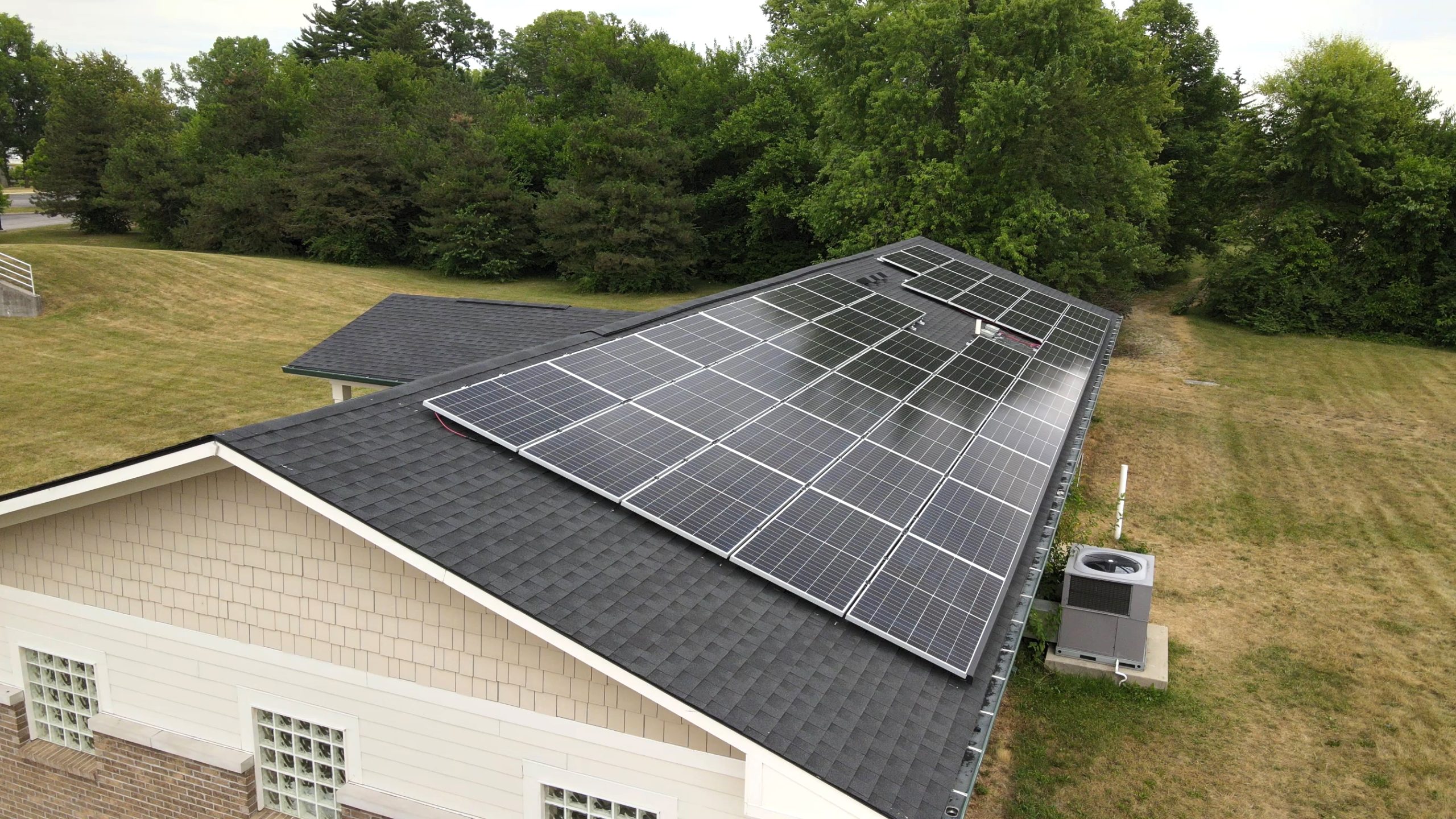
MSD Wayne
Indianapolis | 845 MW
The 2023 C&I Ground-Mount Solar Project of the Year, as voted by the readers of Solar Builder, is the Metropolitan School District (MSD) of Wayne Township in Indianapolis, Ind. It’s a reminder that the best solar projects often involve much more than just plopping down some PV.
But, let’s start with the PV: Veregy installed 845 kW in total across the district — 530 kW on ground-mounts and carports; 315 kW on rooftops. That solar energy was part of a broader energy plan, also developed and maintained by Veregy, that resulted in four net-zero electric buildings in the district and an estimated $58 million in savings over 25 years.
But solar is just a piece of the puzzle.
Project Details
Developer: Veregy
EPC/Installer: Veregy
Modules: JA Solar
Inverters: CPS America
Mounting/Racking: Solar FlexRack, Terrasmart and Unirac
Schooling you
Being one of Central Indiana’s largest school districts, MSD Wayne spends a lot of its annual funding on utility costs, and those costs were only going to increase due to inflation. Considering all that and more, MSD Wayne planned strategically to reduce operating costs to avoid passing the increases on to the tax payers in the community.
Enter Veregy, a developer, EPC and installer with an office in Indianapolis (and 9 others scattered across the country). Veregy Indiana is mainly focused on MUSH projects (municipal, university, school and hospital) and was the perfect partner to help MSD Wayne develop a long-term, holistic energy cost savings plan.
“We find financial solutions that make it affordable and easy for customers to make decisions versus just developing a foundations of energy study,” says Kurt Schneider, account executive for Veregy. In addition to renewable energy, engineering, and project management, Veregy handles ongoing facility energy management. “We design, build and maintain.”
Did the regular cadence of the school day and school year help contribute to the solution?
“Not here,” says Scott Brown, Veregy director of engineering. “There’s a balanced school calendar, so it’s in session the month of August, a very humid and hot month in Indiana. Our peak temperature came about the fourth week of August. That’s a real challenge to keep demand under 75 kW in those buildings [more on this later] and then offset it. And then in January, we don’t have a lot of sun. We commonly refer to it as the ‘gray period.’ In March, when it’s cool and sunny, we start to crank it back up, and then bank some savings in July when school is not in session.
“We have to work hard on sizing the arrays properly because utilities won’t let us over produce too much,” he adds. “We have to hit that annual usage basically right on the button.”
How to get zero
How did Veregy really get to net zero? Arash Habibi-Soureh, energy engineer, says it is a multi-pronged approach that starts with the rate structure:
“MSD of Wayne Township’s rates were demand based and expensive. But there’s a rule that if you are less than 75 kW of demand per year, you can move to an energy friendly rate that doesn’t have a demand component, just energy,” he tells us.
Veregy had its goal: 75 kW. One building was already consistently below that, so they put solar on top of that. The other three involved implementing a few other energy strategies to hit the 75 kW mark, before adding solar to achieve net zero:
• Updated air conditioning
• Retro-commissioning
• Occupancy sensors on the lighting
• CO2 sensors for demand ventilation
Still, equipment only gets you so far. Net zero demands an on-going, daily vigilance of the PV production, when and how the HVAC is running, and so on. This too, Veregy provides.
“We tightened up the schedules, so when the building is not in use we turn equipment off,” Brown elaborates. “We optimized temperature settings throughout the building. With the CO2 sensors, if the space isn’t occupied, we’re not bringing in a lot of untreated, cold air if we don’t need it. But if we need it, we want to be able to bring in the right amount to maintain a proper, healthy indoor air environment for the students and the staff.”
“We have all these utility meters installed, so we’re tracking water, electric and gas in real time, coming up with the strategy, and sharing that with the customer,” Habibi-Soureh says.
The long-term relationship is important — and also public facing. School board members and tax payers can check out how Veregy is following through on its energy savings plan at any time.
“Our dashboard shows the energy unit index in the buildings and compares it against the reality without these projects in units, not dollars,” Schneider says. “It shows lifetime energy savings and the dollar savings equivalent to the average teacher’s salary.”
Yearly energy savings, conservatively, are pegged at $1.25 million.


Guaranteed energy savings
This project involved one of the largest guaranteed energy savings contracts for a school district in the state of Indiana. This means Veregy guarantees the school will be able to make its payment, and the state allows for a 20-year payback period.
A guaranteed energy savings contract is the simplest procurement method for a school project, Habibi-Soureh says, versus a bid-spec or design-build contract. It has some other benefits too.
“One is the savings of the project pays for itself, with a 20-year term to accomplish it,” he says. Veregy forecasts a 13.8 year payback to recoup all of the costs for all of the energy savings from the measures listed earlier.
“But also, since you have the savings paying for the project, it is the project’s check and balance. You can work with any subcontractor you want or any manufacturer you like and want to work with, versus a bid spec, where you might be stuck with whoever,” Habibi-Soureh says.
The district’s maintenance crew benefits in a practical way. Instead of working with four different chillers and four different alarms (like they were), they now have just one brand that they know and prefer. On the solar system side, Zach Simms, Veregy regional operations manager for Indiana, was able to go with his preferred suppliers.
“Each has an expertise,” he says. “Solar FlexRack is a user- and installer-friendly ground-mount system. And then Terrasmart, they are the big dog when it comes to carports. Aligning Veregy and MSD Wayne with all three of those experts helped us provide the highest quality product we could for each application.”
Carports in Indiana?
How rare is a solar carport in Indiana?
“Thanks to our sales staff, we’re putting them lots of places now,” Brown boasts. “We have a large bus canopy that we’ll probably be talking to you about next year.”
The MSD Wayne carport is notable for its underdecking, which has a cleaner look, and for its robust structural spec.
“Other carports around aren’t as beefy as what we and Terrasmart built here, but we have students and staff going around, so we want to make sure without a doubt that they are built to last for 30-plus years.”
Cool, right? Well …
“You’d think we’d get great feedback for the buildings being net-zero electric, but people in the community still ask, ‘why are you putting that [carport] up?’” Schneider says. “They don’t understand why they are doing it. That’s the biggest issue we have — everyone recognizing that this was a funding source that can put money back in the classroom and pay for things they needed to accomplish in their capital budget.”
All in, the project savings contributed to MSD Wayne reducing operating costs, saving community tax dollars, and putting dollars back in the classroom. A worthy Project of the Year winner — whether the local community knows it or not.







